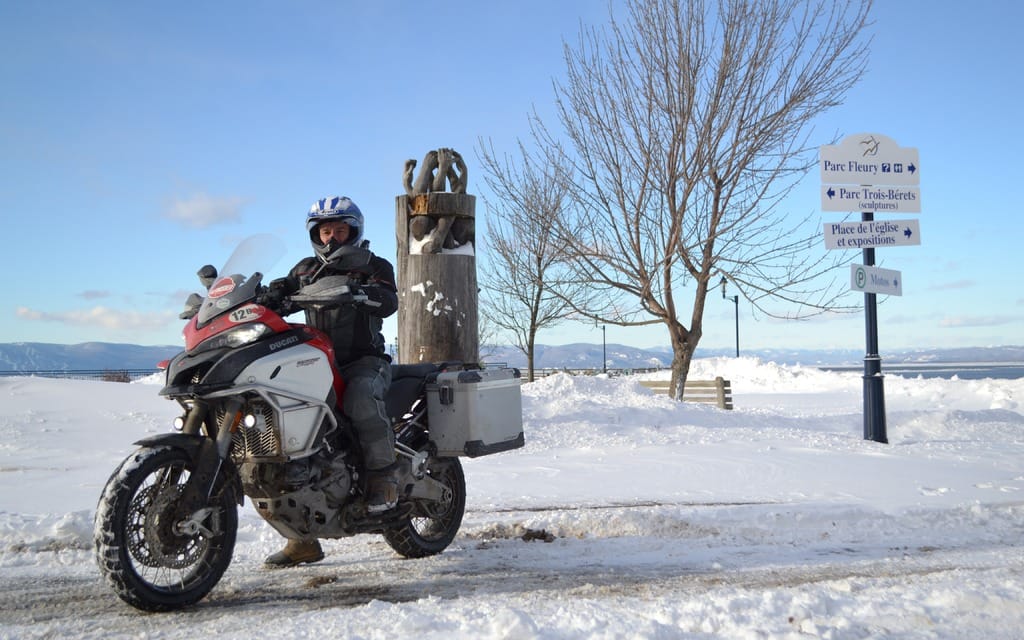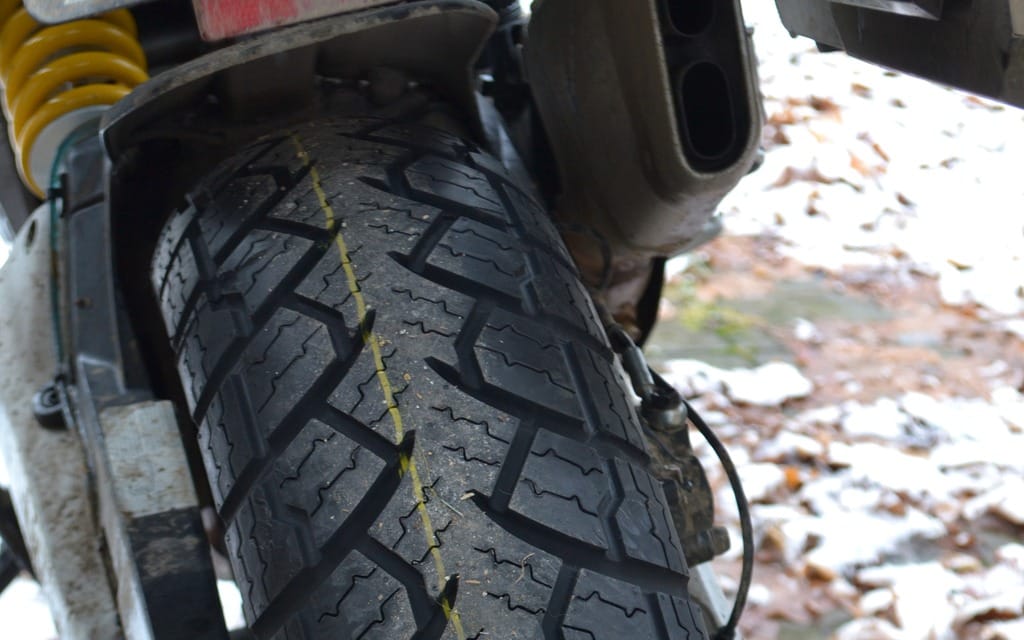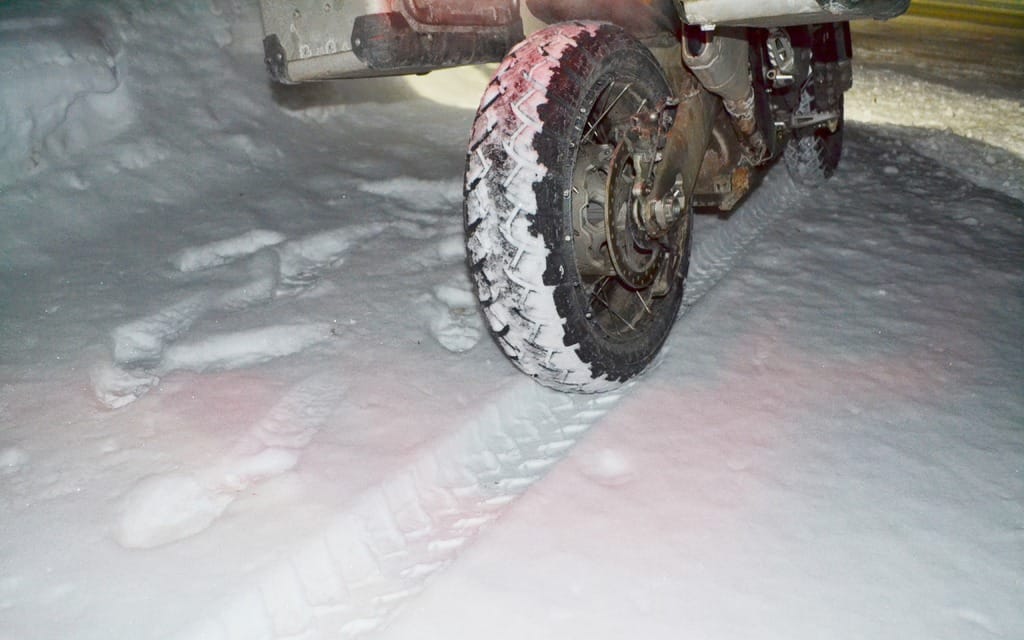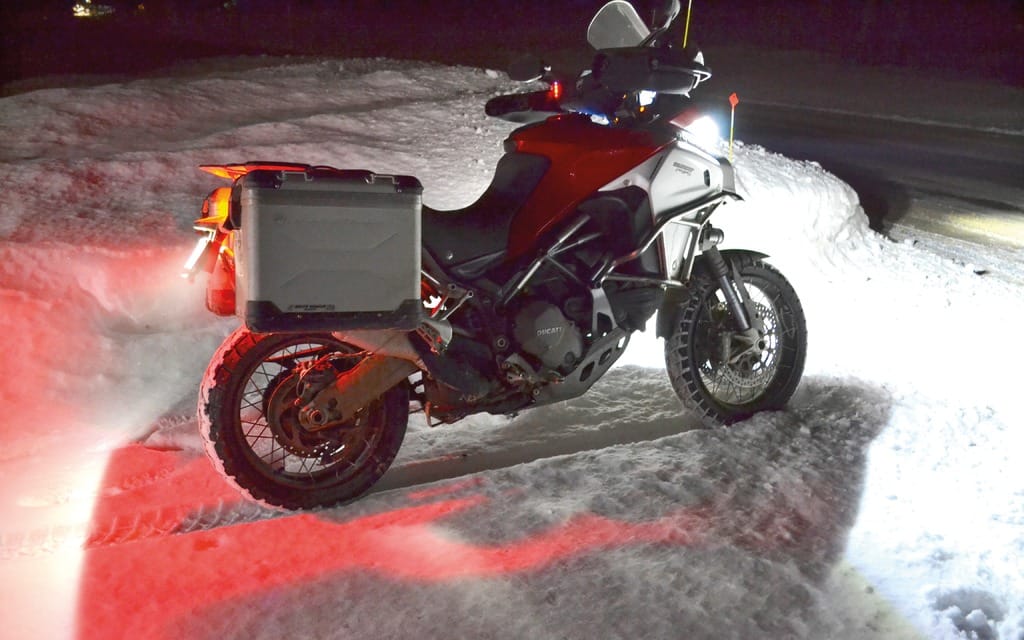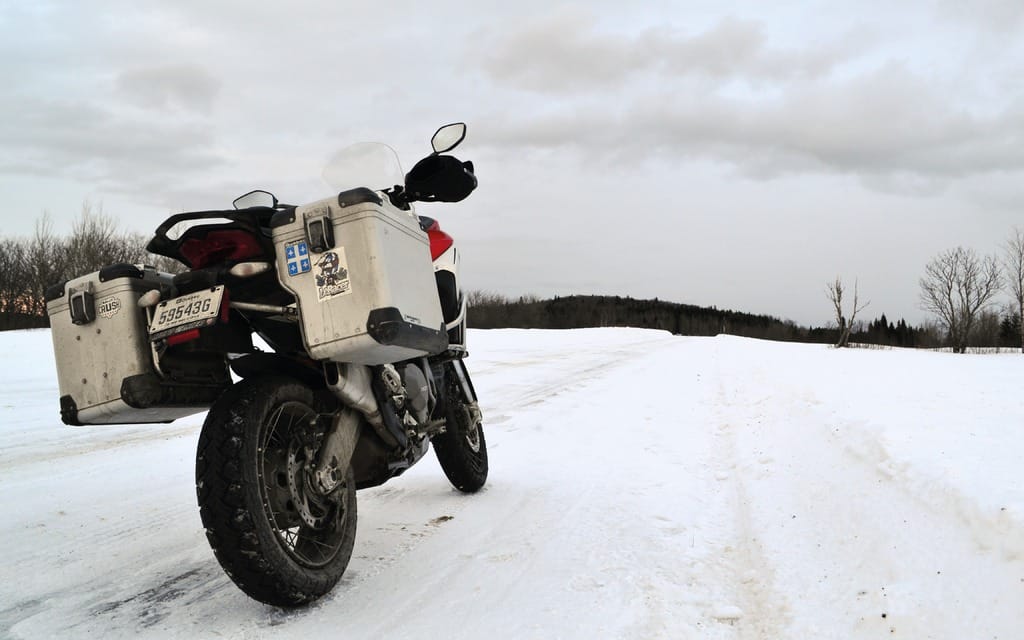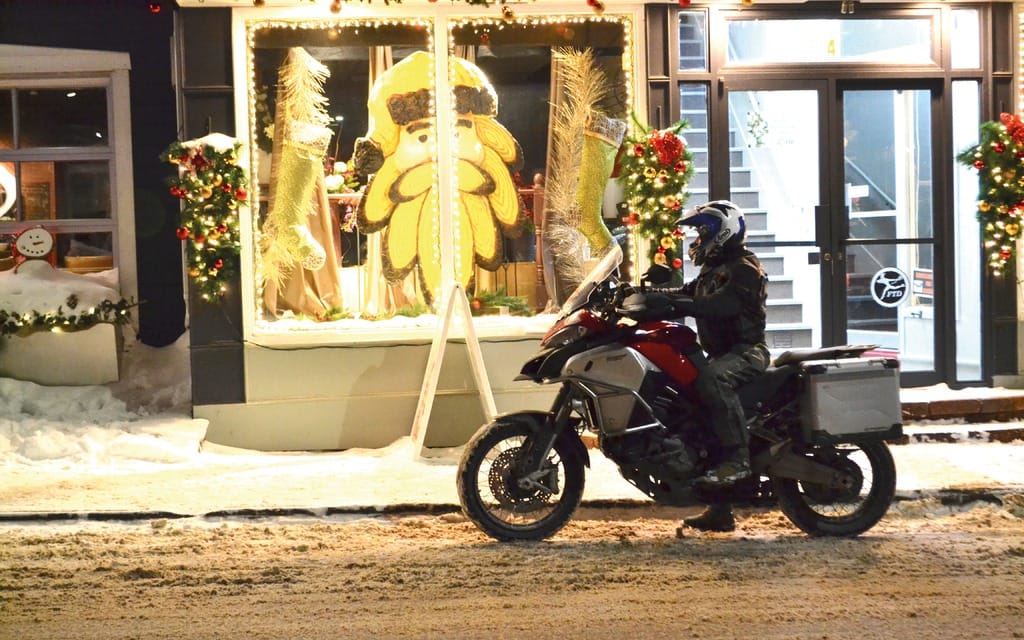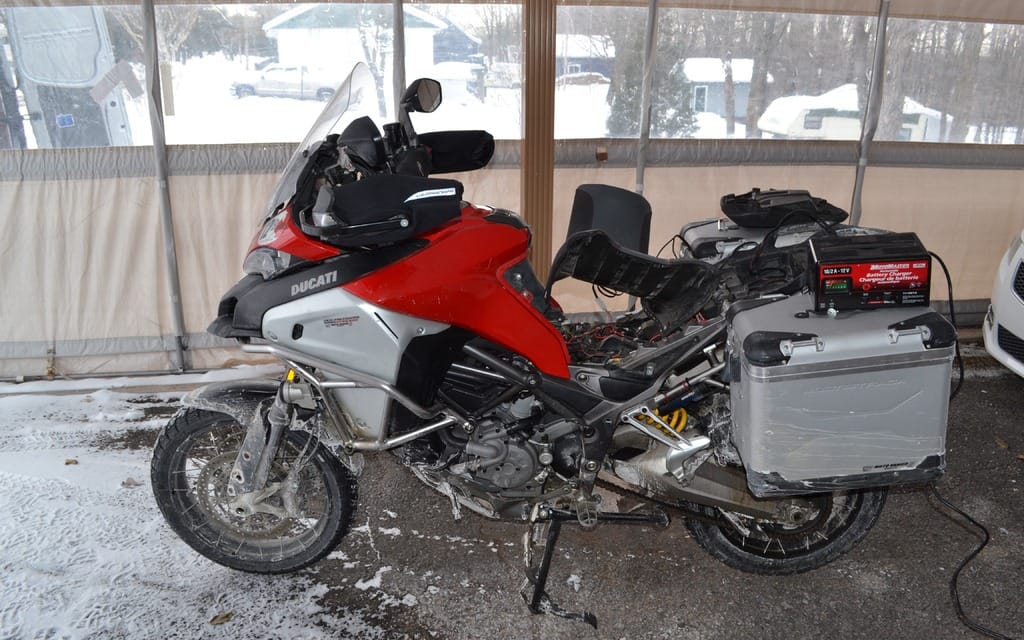Tires for winter motorcycling hit the mark
“Isn’t it too cold to ride a motorcycle?” asks the lady. I reply politely that, no it’s not too cold and that I am equipped properly to face the minus 21-degrees actual temperature.
I could have told the lady that it’s impossible to ride in that weather, with a 40 km/h wind and quite a bit of blowing snow, but then it would have been too obvious that I was being sarcastic as she just watched me park my Multistrada Enduro before I walked inside.
I had a hard time getting my Ducati started earlier as the night was in the minus 25 degrees range and my Italian princess was unhappy about that! No issue with the Anlas Winter Grip Plus I am testing since the end of November though — they provide plenty of grip on the cold, dirty pavement and are even quite manageable on the very cold snow. You know that colder snow is grippier and, as long as I don’t throw caution to the wind, I can carry on over the white, hard packed stuff and even ice.
As I live in Eastern Quebec, you can understand that winter here is a good place to test the limit of those tires that proudly wear the 3PMSF (3-peak mountain, snowflake) pictogram. That is mandatory on Quebec roads, for us residents, from the 15th of December to the 15th of March since 2008. Some riders will buy the Anlas Winter Grip Plus just to be able to ride on the nice, sunny days that always tantalize us during the colder months. I will happily keep riding at all times as I find them quite capable in about every wintery condition. Okay, I won’t be throwing myself in heavy traffic in a snowstorm. But I may very well go out in a storm, on some quiet road! I did ride in a snowfall, on the 25th of December at 18 below zero for good measure. I admit that I was looking to go see a friend at his cabin but the back road to his place was just too treacherous with an icy bottom covered with five centimetres of fresh white stuff. I opted to stick to paved roads and turned around 15 kilometres from my destination. Better safe than picking up a 600-pound bike. I could have done it but did not feel confident; that was before I talked with the tire maker and got proper information on the pressure to run.
The Anlas Anadolu Lastik A.?. tire company started producing winter tires for two wheelers in 2011, for scooters at first and for motorcycles in 2013. “The first in the world” displaying the pictogram, as stated on the label adorning the tires. They have been available here in Canada for a couple of years now and I was looking forward to testing them. I mounted the 120/70 R19 and 170/60 R 17 on my Multistrada Enduro at home so I could evaluate how well they are built. I saw no difference to any other high quality, radial construction tire. They have a quite stiff carcass, testing my mounting ability and my tire irons. Strangely the tread compound does not feel all that supple at room temperature. Balancing required just a small amount of weight, all good. The rubber mix, developed in-house by the Anlas chemists, combined with the open tread, deep grooves and sipes, grip the pavement the moment I hit the road, no warming-up necessary. Better that way because they would be of little use if a long warm-up was needed; when it’s below minus 10 or minus 15, I don’t always go for long stints.
I equipped my Ducati with a D-I-Y heated seat-kit from the good folks at Sargent, it does help and will come in handy for my planned trip that I pushed back due to the extreme cold wave we suffered through. I also installed hand muffs to my Ducati to turn it into a proper Winter-hack.
Yes I enjoy riding on the Winter Grip Plus and, with close to a 1,000 kilometres travelled in the six weeks I had them, I just start to be confident enough to really have fun. Confidence is a must for motorcycle riding and that fact is magnified 10-fold in the winter. I had started my testing by guessing the appropriate pressure to use. I went with 24 PSI front and rear, as with my 50/50 tires set-up, since the Anlas have a stiff construction. I wrote to the good folks at the Duzce headquarters, near Istanbul, and they suggested trying pressures about two pounds under street tire recommendations which translated to 32 and 35 PSI for my application. I was happy with the performance with the lower pressure but the change just brought my confidence level way up. Now I’m giggling as I watch the TC lights flash when I accelerate to outrun cars in the slush or mushy snow. The same lights come on on pavement, be it dry and dusty or even wet, but it’s the wheelie control that seems to intervene there.
Accelerating is easy and quite safe, but braking demands more restraint. When the tires actually meet the pavement, I dare say that I can slow down more forcefully than the average rider does in normal conditions. In slushy or snowy conditions, I’d compare that to braking in a heavy rain downpour down to braking on a gravel surface, depending on snow/slush depth. On hard-packed snow and ice, a light touch is obviously required. A stop sign at minus 20 is a likely spot to find black ice and I adjust my actions accordingly. It can be done safely and the more you ride in less than optimal conditions, the better your skill will be as a rider. You just have to be aware of your limits and work on your skills progressively.
It’s the challenge that makes winter riding so much fun for me. The Anlas Winter Grip Plus tires are just what I needed to expand my winter biking diet. It’s not just ice racing and trail riding anymore; I’m free to roam the roads and go places, be it across town or a couples of provinces (or states) over.
